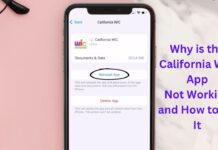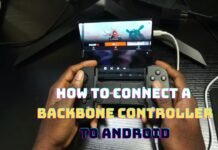As we move further into the digital age, mobile devices are becoming increasingly important for accessibility. The World Wide Web Consortium (W3C) has released its latest guidelines, WCAG 2.2, to help website developers make sure that everyone can access and use their websites regardless of device or disability. These standards provide a comprehensive framework for designing and building accessible websites that work on both desktop and mobile devices.
In this article, we will discuss what WCAG 2.2 means for mobile accessibility and how it can help ensure that your website is truly inclusive to all users.
Contents
What Does WCAG 2.2 Mean?
WCAG 2.2 is basically web content accessibility guidelines that are based on four essential principles:
- perceivable
- operable
- understandable
- robust
These are the same basic concepts that form the basis of all of WCAG’s standards and guidelines for website design and development but the difference with WCAG 2.2 is that it applies them specifically to mobile accessibility and addresses the challenges that mobile devices present.
WCAG 2.2 provides specific requirements and recommendations related to touch targets, labels, feedback messages, orientation, scrolling, and more. With these guidelines in place, it is easier to ensure that a website will be usable by people with disabilities who use mobile devices.
WCAG Compliance Levels
WCAG 2.2 details three different levels of compliance: A, AA, and AAA.
Level A
meeting the requirements of WCAG’s minimal level should be an utmost priority for everyone. This includes straightforward and conventional adjustments like captioning all video content, which is a necessity under WCAG A guidelines. Failing to adhere to these rules can result in excluding numerous users from your website while also providing them with a subpar experience.
Level AA
Achieving the Level AA rating involves meeting all of the criteria from Level A, plus additional accessibility requirements. For example, captions must be provided for pre-recorded and live audio content; additionally, standard audio descriptions are also needed to meet WCAG AA standards. At present time, achieving a minimum of this level is often expected for websites.
Level AAA
If you are gunning for the highest level of accessibility, AAA should be your goal. It includes norms that can seem out of reach to most web pages, like extended audio description which provides a more vivid explanation tailored to those who are Deaf or hard of hearing. Additionally, its criteria around color contrast and other elements demand a higher standard than A or AA levels do in order to qualify as Level AAA.
Currently: Online Access Guidelines Are Unclear
At the moment, there is a lack of clarity on what constitutes an accessible website for mobile users. For example, the laws of Americans with Disabilities Act (ADA) fails to directly address online accessibility. Beyond a few regulations that only apply to public entities, laws overlook explicit mandates. Therefore, WCAG 2.2 provides much-needed guidance to ensure that websites are optimized for mobile devices.
How Can WCAG 2.2 Help with Mobile Accessibility?
WCAG 2.2 can help ensure that people with disabilities using mobile devices are able to access and use a website just as easily as those without disabilities. It provides guidelines on how to make sure your website is optimized for mobile users, such as providing accessible touch targets (such as larger buttons), descriptive labels, clear feedback messages, and more. WCAG 2.2 also provides guidance on how to provide an easy-to-use mobile interface for users who use assistive technology such as screen readers or speech recognition software.
The Importance of Mobile Accessibility
Mobile accessibility is becoming increasingly important as more and more people rely on mobile devices for accessing the internet. In fact, more than 60% of internet traffic now comes from mobile devices. It is essential to ensure that your website is optimized for mobile users so that everyone can have an enjoyable experience interacting with your website, regardless of their device or disability.
WCAG 2.2 provides a clear set of guidelines to help websites and mobile developers ensure their websites are accessible and usable by all users, regardless of device or disability. This can help create an inclusive online experience that allows more people to access and use the web.
Conclusion
WCAG 2.2 is an essential tool for making sure that websites are optimized for mobile devices and can be used by people with disabilities. It provides clear guidelines and criteria that must be met in order to achieve a certain level of compliance.
Meeting Level A requirements should always be an utmost priority, as it is the minimal level that websites should adhere to. Additionally, achieving Level AA or AAA can help make sure that websites are even more accessible for people with disabilities. By implementing WCAG 2.2, website developers can ensure that everyone is able to access and use the web regardless of device or disability.





































 Online casino
Online casino
